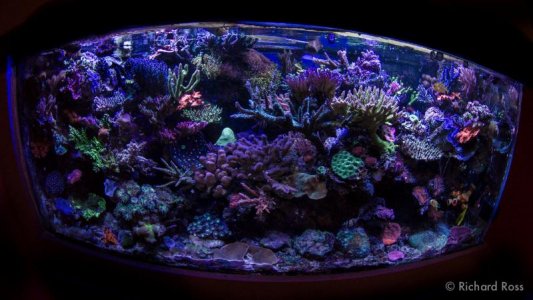anthonys51
New member

Sent from my iPhone using Tapatalk

"As far as PO4 and calcification, as PO4 increases calcification decreases. What is contradictory is at reef normal levels, .05 - .5 mg/l, coral growth increases as PO4 increases. As far as what levels are required to kill corals it needs to be at least 10X higher than reef normal or above 5.0 mg/l (species and genotype is a factor). I have seen birdsnest and poccilopora growing at even higher levels but growth was understandably stunted."
I don't think you can say calcification decreases or increases in inversely proportion to PO4 levels. The calcification is altered in form but may actually be equal in total aragonite crystal growth.
Where does the lethality level of 5.0 mg/l come from?
When You say 5 mg/l. Do you me .50 ppm is that the same thing
Sent from my iPhone using Tapatalk
This study showed increased growth with increased PO4 but also reduced skeletal density:
http://www.sciencedirect.com/science/article/pii/S0022098111004588
I've read that paper at least once before . It says linear growth increases with less density. It doesn't say calcification is reduced.
As far as the lethal level of PO4 being at least 5.0 mg/l, depending on species and genotype, is based on my own observations. I see acros, montis, birdsnests, Pocillopora and stylos apparently happy at levels up to 5 mg/l. At 8 mg/l I've seen Pocillopora damicornis and Seratopra histrex and put on new growth but are clearly very stunted. The same level slowly killed a green birdsnest (S. guttatis?) and a Surf and Turf acro showed now growth but maintained color.
Thanks for clarifying the anecdotal observation. It originally sounded like there was some data being asserted as originally stated in your earlier post :
"As far as what levels are required to kill corals it needs to be at least 10X higher than reef normal or above 5.0 mg/l (species and genotype is a factor).
5mg/l is 5ppm. The conversion factor is 1:1.

anthonys51 "I would like to see the tank that does well at 50 nitrates and .25 phosphates long term Maybe if it's a tank of softies "
View attachment 368311
please review this thread
http://www.reefcentral.com/forums/showthread.php?t=2366953
